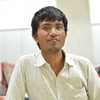Republic Day special: British atrocities still fresh in the memory of two villages in Madhya Pradesh’s Baghelkhand
Two villages named Maajan and Pindra in the Baghelkhand region of Madhya Pradesh still remember the brutal killings of their ancestors who once rose to challenge the might of the British Empire. Read on to know more.

Maajan/Pindra, Satna (Madhya Pradesh)
The memory of the charge of the Gorkha troops of the British Indian Army is still fresh in the minds of the elderly residents of the Maajan village in Madhya Pradesh’s Birsinghpur tehsil in Satna district.
“I must have been five-year-old then… some soldiers wearing long boots and caps were marching into the village and the atmosphere was extremely chaotic. Men, women and children were all running for their lives as bullets were shot from all sides. I was hidden in an attic by my parents and I survived but many didn’t,” Ram Lakhan Dwivedi, a frail-looking 90-year-old told Gaon Connection.
“Those were Nepali Gorkha soldiers who were ordered by the angrez afsars (British Army officers) to spread mayhem in my village,” he added.

‘A Jallianwala Bagh like killing’
Dwivedi’s memory of the violent sacking of his village is registered as one of the most violent attacks on the hapless civilians in India’s freedom struggle against British rule. The killing which took place on July 10, 1938 claimed the lives of at least three people while an unspecified number of people were injured.
Also Read: From royal patronage to penury, the dwindling of the ironmongers, Lohagadiyas
A magazine published by the state government titled Madhya Pradesh Sandesh included an article on the sacking of the village in its independence day special edition of 1987. As per the article, the ruling princely state of Sohawal of which the Maajan village was a part of, had increased taxes on the subjects which led to a revolt amongst the villagers in the state.
The ruler of the princely state then sought the assistance of the British to quell the protests which consequently led to the killings in 1938.

The villagers in Maajan remember the Diwan (ruler) who sought British assistance with great distaste.
“That Diwan named Hardev Singh allied with the British to kill his own people. It was dastardly. This village will never forget him,” Dadwa Saket, a 97-year-old resident of the village, told Gaon Connection.
“I must have been around 7-year-old then. We were all taking cover behind a mahua tree to escape the bullets of the soldiers. Mandheer Pandey, Ramashray Gautam and Budhhi Pratap Singh however got hit by the bullets. Mandheer Pandey was riddled with many bullets, yet he did not fall on the ground. The Britishers kicked the dying man to make him fall,” the old man added.

Villagers here remember the incident as their ‘Jallianwala Bagh’.
‘Entire village was set alight after shelling by British canons’
Meanwhile, at a distance of about 52 kilometres from the Maajan village, lies another village named Pindra whose residents have a similar but bloodier story to tell about the British atrocities in 1857.
“If you dig the village at any point till three to four feet, you’ll find ashes and burnt remains of houses. It is because during the First War of Independence, the Britishers had burnt down the entire village to quell the resistance of the freedom fighters,” Raj Kumar Payasi, an 81-year-old resident of the Pindra village which is situated in the Majhgawan tehsil of the Satna district in Madhya Pradesh, told Gaon Connection.
Also Read: A young man’s desire to join the army went bust, but he found other ways to fulfil his dream

Payasi further informed that his grandfather had told him about the incident in his childhood and it used to be one his favourite stories back then.
“But now, I feel angry thinking about what my ancestors went through… actually, this village mostly had bird-catchers (beheliye) in those days. The spirit of freedom from the British yolk was raging in every heart in those days. There was a gurukul (school) in the village where people were trained in martial arts. Upon learning about the training centre, the Britishers sent some soldiers to enquire about the school,” he told Gaon Connection.
“When the students at the school got to know about the soldiers, they all attacked them and hung them on the tamarind tree with nails,” he added.
Basant Lal Dwivedi, grandson of a freedom fighter named Ramapati Dwivedi who lost his life to the cause further stated that following the killing of the British soldiers, some youth from the Beheliya community dressed up with the uniforms of the slayed British soldiers and participated in the folk dance on Diwali.
“The British took it as a deep insult and surrounded the village. They then placed their canons on the adjacent hills and bombarded the entire village which led to a massacre. The Britishers then burnt the entire village three-four times. The residents of this village in the present day are all descendents of the shaheed (martyrs),” he said.
The village head informed Gaon Connection that the entire village population of almost 8,000 people trace their origin to the 135 people who died in the attack. A memorial called ‘Keerti Stambh’ built in the village to honour the freedom fighters has the names of the 135 martyrs inscribed on it.
“Despite being such a prominent village in India’s freedom struggle, it is remembered only twice a year — once on the Independence Day and the second time on the Republic Day. Nobody checks on the lives we live here after these two days,” village head Devidayal Prajapati told Gaon Connection.
“At least the government should develop the school where the freedom fighters were once trained,” he added.

